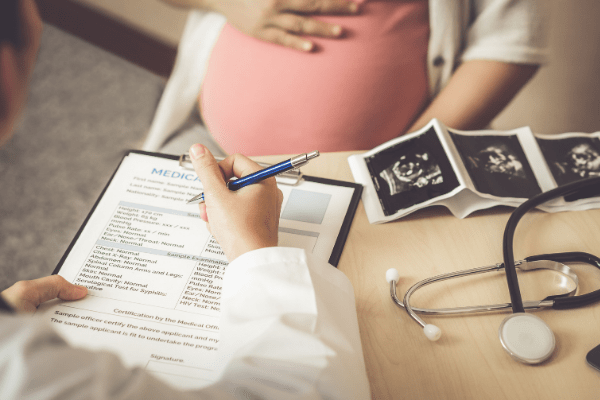Perineal tears are an often not talked about aspect of childbirth. As a result, many women suffer in silence after they experience a severe tear.
In fact, three percent of Australian women giving birth, and five percent of women having their first vaginal birth are affected by a third or fourth degree perineal tear. The risk of a perineal tear is higher when instruments such as forceps or vacuum extraction are used.
Four years ago, 2.5 percent of vaginal deliveries without instruments in Australia resulted in a third or fourth degree tear, whereas across the OECD the figure was 1.4 percent, making the rate of perineal tears among women in Australia above average in OECD countries.
But there is a chance to reduce the risk of a third or fourth degree tears occurring with appropriate interventions during labour. This week, a new national standard of care aims to reduce the risk of women experiencing a serious tear of the perineum at childbirth.
The standard is being published in the first national Third and Fourth Degree Perineal Tears Clinical Care Standard, issued by the Australian Commission on Safety and Quality in Health Care, which will make sure women get appropriate treatment and support through their childbirth experience.
The Australian Commission on Safety and Quality in Health Care is an Australian Government agency that coordinates national improvements in the safety and quality of health care based on the latest scientific evidence.
The commission partners with patients, carers, clinicians and healthcare organisations to ensure the health system is better informed, supported and organised to deliver safe, high-quality care.
The Commission’s Clinical Director, Professor Anne Duggan believes that health professionals and women need to feel comfortable having conversations about perineal tears, as the risk of damaging tears can actually be reduced with evidence-based, woman-centred care.
“Minor perineal tears are common during vaginal births and most heal well, but some women experience a more serious tear that requires surgical repair,” Professor Duggan said in a statement.
“With third and fourth degree tears, there may be short and long-term complications affecting a woman’s physical, psychological and sexual wellbeing.”
“We want women to understand that they can talk to their healthcare team to prepare for childbirth, and to know that if a serious tear occurs, high quality care is available to help them recover well, and reduce the likelihood of long-term impacts.”
“During pregnancy, women may be feeling overwhelmed with making decisions about their health care,” she continued. “This standard aims to ensure they are well informed and prepared for what they may experience with childbirth.”
“Making sure that women get the information they need before they go into labour is one thing we can do to improve the quality of care we offer to mothers, particularly in relation to perineal tearing where we don’t do as well as comparable countries in the OECD.”
Professor Duggan explained that the new standard will also “…improve the care, and ensure the best chance of recovery, for women who do experience such tears.”
“When they occur, it is important that they are identified early and are surgically repaired soon after birth to help prevent long-term problems,” she said.
Professor of Midwifery at Western Sydney University, Hannah Dahlen AM, is relieved that reducing perineal trauma during childbirth is getting attention from the wider public.
“We need healthcare providers to talk to women sensitively about this important health issue during pregnancy, so they can be empowered with knowledge and helpful strategies as they approach one of the most powerful moments of their lives,” she said.
Associate Professor Emmanuel Karantanis, a Sydney-based Obstetrician and Urogynaecologist, comes across mothers from culturally diverse communities.
“The clinical care standard on third and fourth degree tears is an important guide for both women and health workers,” he said. “It brings to our attention a subject which until recently was taboo, but which can cause lifetime problems and embarrassment for women who suffer in silence all too often.
“Women deserve to know more about the factors leading to third and fourth degree tears. More effort is required to check for these tears immediately after childbirth.”
“Women who sustain these tears deserve early diagnosis, prompt explanation, effective treatment, and ongoing physical and psychological support. The evidence shows that such interventions can improve women’s quality of life.”
These latest clinical care standard have been endorsed by the Royal Australian and New Zealand College of Obstetricians and Gynaecologists (RANZCOG), the Australian College of Midwives (ACM), the Australian Physiotherapy Association (APA) as well as other professional bodies.


